For the Common Good: Chicago Architecture Biennial’s “. . .and other such stories”
January 28, 2020 / 0 Comments
Just ending its 14-week run that coincided with the rise of global anti-government protests, the Chicago Teachers Strike, and devasting fires in Australia, this year’s iteration of the Chicago Architecture Biennial (CAB) offered a platform for projects, many collaborative and citizen-led, that explored the social function of architecture and its publics. Titled “. . . and other such stories,” the biennial took an activist approach to architecture and urban transformation using the Chicago Cultural Center and various satellite spaces as sites for alternative investigations of how we might shape and inhabit the world. It also positioned itself in stark contrast to CAB’s previous editions. Both the inaugural “The State of the Art of Architecture” (2015), a more conventional survey of the current field and its leading practitioners, and “Make New History” (2017), a rather insular view of the impact of modernist histories on the architecture of the present, revisited well-known narratives and isms often removed from the social issues with which architecture must contend. (See my previous reviews in this blog.)
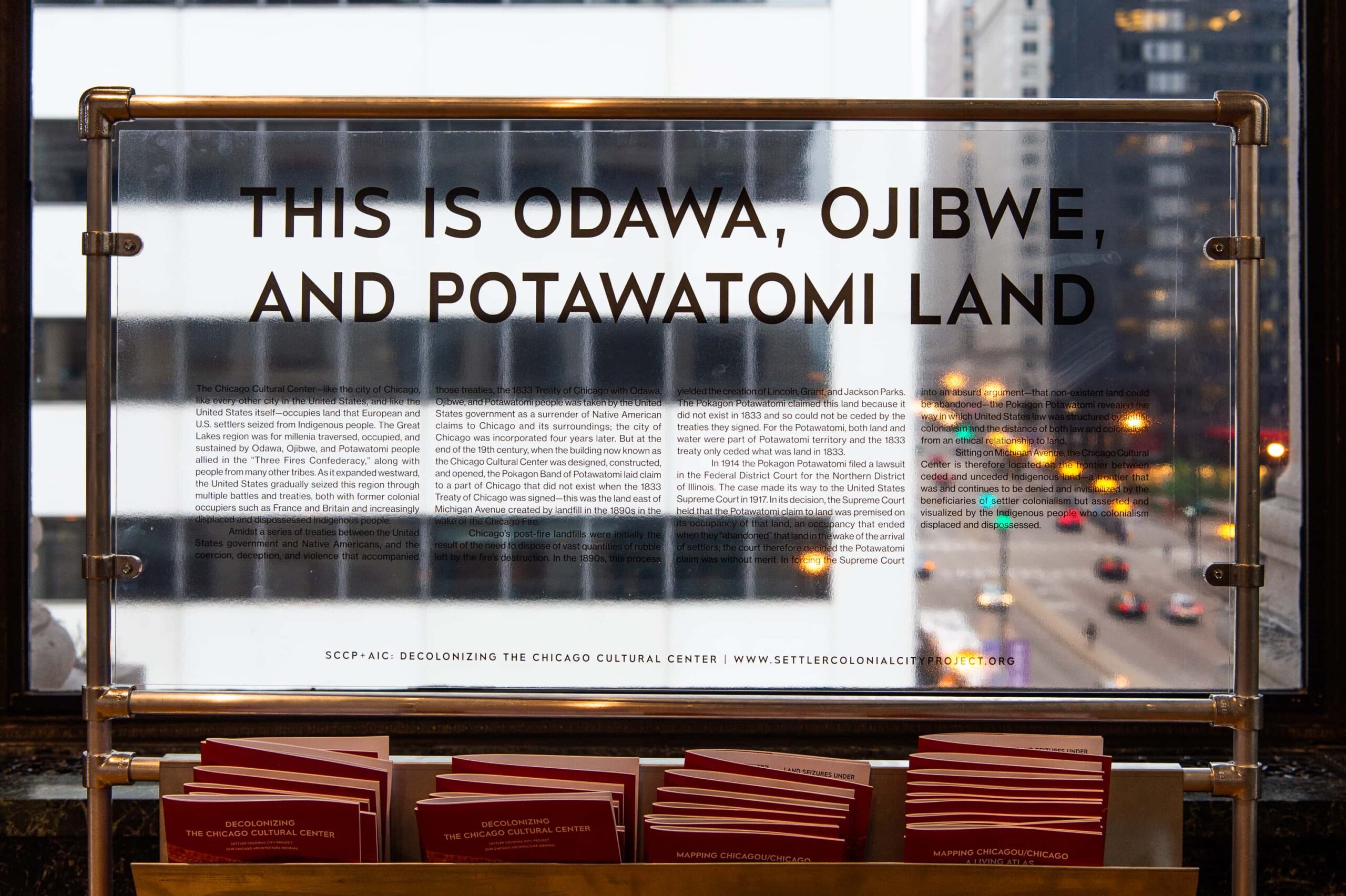
Instead, Artistic Director Yesomi Umolu, alongside curators Sepake Angiama and Paulo Tavares, shaped an exhibition, more focused and smaller in scale, that gave voice to a wide spectrum of spatial practitioners, cultural producers, and everyday citizens. As stated by Angiama in a curatorial roundtable during CAB’s opening events, “Architects are not the only producers of space.” The result was series of critical models that challenged architectural orthodoxies by placing issues of access and displacement front and center, with several projects addressing land ownership, public housing, urban violence, and climate change. In fact, land acknowledgement and critical perspectives on Chicago’s colonial displacement of the Odawa, Ojibwe, and Potawatomi nations from their indigenous homeland framed the exhibition. Projects by the American Indian Center and the Settler Colonial City Project, whose interventions took the form of public signage installed throughout the building, excavated complicated histories of territorial expansion, exploited labor and stolen resources behind the Cultural Center’s own construction. Originally the Chicago Public Library, it was built on unceded land.
Yet despite CAB’s more political aims for which I have advocated in my previous reviews, I found this installment of the biennial the most difficult to engage with for reasons I don’t fully understand. It amplified the issues and voices I have embraced throughout my critical practice and presented them in a series of immersive environments accessible to a broad range of interests and publics. It also extended the biennial’s reach beyond downtown and the Cultural Center, including for example, Bronzeville, where Borderless Studio is leading collaborative efforts to transform Anthony Overton Elementary School, one of fifty public schools closed in 2013, into a community resource center. (Note that this project was also featured in the 2017 CAB.) I guess for me, “. . .and other such stories” succeeded less as a presentation of multivocal perspectives on the essential challenges of architecture and design – which at times trafficked in its own kind of orthodoxy – but rather, in its conception of architecture as a social practice.
Positing architecture as a tool for social transformation and new forms of public engagement sees its parallel in the concept of The Commons, a collective spatial and social entity that advocates for the common good. A noun and a verb, a site of encounter and a process of mediation, spaces of commoning are elemental to many of today’s artistic and social movements, as well as citymaking and tactical urbanism. According to the authors of Spaces of Commoning: Artistic Research and the Utopia of the Everyday (Sternberg Press, 2016), “Beyond shared resources, commoning involves a self-defined community, commoners who are actively engaged in negotiating rules of access and use or the making of a social contract.” (Note 1)
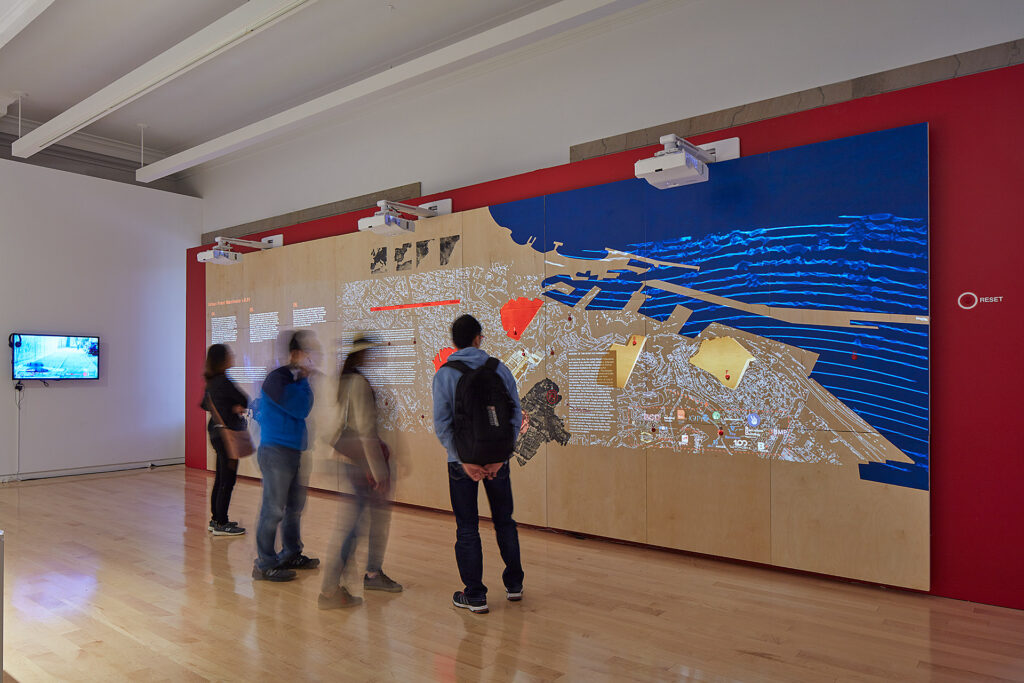
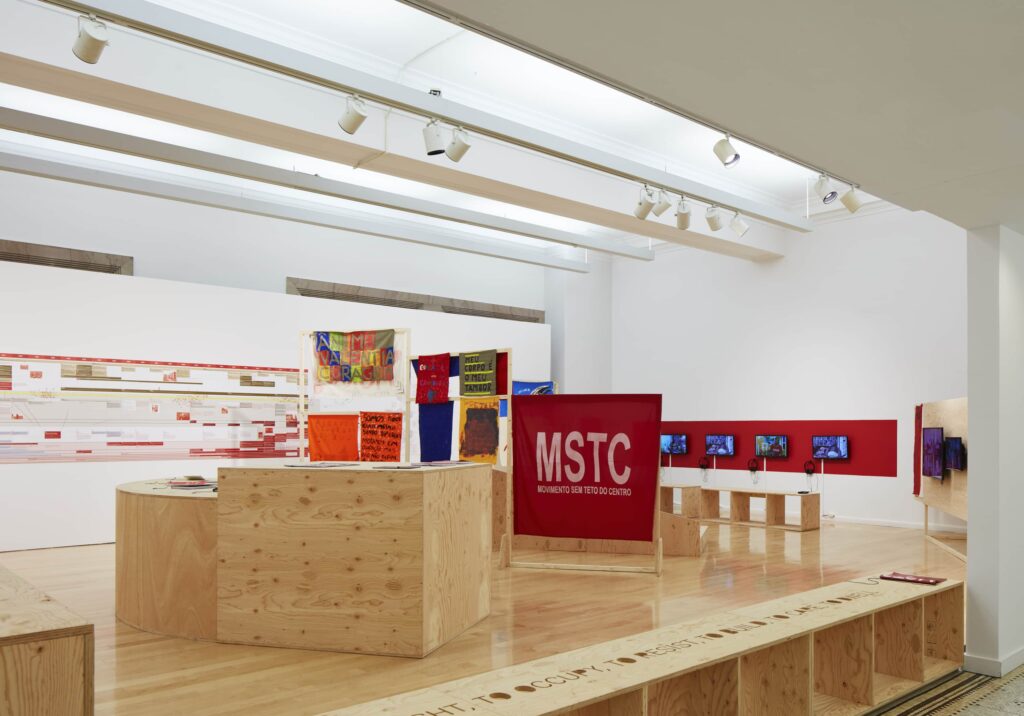
Commoning then became the biennial’s leitmotif, with its focus on collaboration, interdisciplinary practices, research, and process-oriented approaches to urban change. Several projects addressed affordable housing. For example, Urban Front, a consultancy network of the collective Cohabitation Strategies, was represented by an interactive wall diagram that documents their ongoing work in Barcelona to redirect private development for more equitable housing. The housing shortage in Brazil was the focus of two projects, where we learned in an installation by MSTC (City Center’s Homeless People’s Movement) that over seven million families live without access to affordable housing despite an abundance of vacant properties. Videos, hand-painted protest signs and wooden benches with books and informational handouts showcased the various strategies deployed by MSTC to fight homelessness. A 500-foot wood armature equipped with documentary videos and installed on the building’s second-floor landing echoed the dimensions of apartment units in downtown São Paulo that the nonprofit group FICA (Community Rental Real Estate Fund) renovates then sells at affordable prices to those in need.
Re-Rooting + Redux (2019), by the Chicago-based Sweet Water Foundation, also employed a wooden structure in a timeline installation that traced the evolution of architecture and housing on the city’s South Side, including racist legacies of school segregation, redlining and urban blight. Inspired by Chicago workers cottages – an early and once ubiquitous example of affordable housing – the open-frame construction is also a replica of the structure that sits on the foundation’s central site in Englewood. Known as The Commons, this community anchor has become a resource for urban agriculture, art, and education focused on neighborhood development and regeneration. Their mission, in both name and spirt, typifies the practice of commoning at the heart of this year’s CAB.
Elsewhere, projects by the collaborative Territorial Agency, artists Oscar Tuazon and Carolina Caycedo explored oil and resource extraction, land and water rights, climate disaster and environmental justice. Caycedo’s powerful video A Gente Rio (We River) (2016) investigates the devasting environmental and economic impact of monumental dam disasters in Brazil. Combining quasi-abstract images of raging waters, documentary footage and the stories of local citizens, the artist makes visible the destructive forces of flooding and contamination on local communities and ecosystems, while simultaneously honoring rivers as a source of life.
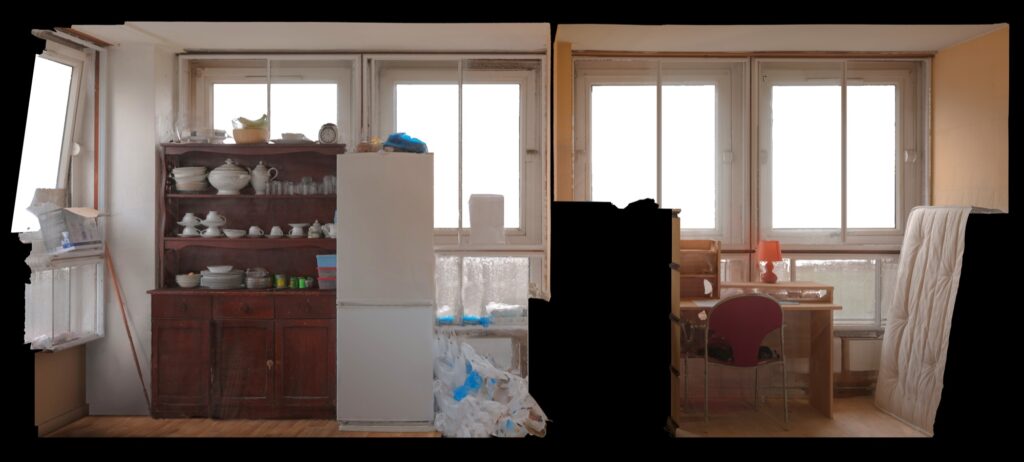

Caycedo and Tuazon were among several artists included in CAB, joining Tania Bruguera, Maria Gaspar, Theaster Gates, Alexandra Pirici, Jimmy Robert, Santiago X, and Do Ho Suh, the latter whose video installation of the demolition of the Robin Hood Gardens public housing in London offered one of the biennial’s most poetic moments. (Bruguera and Asociación de Arte Útil occupied the library of the Jane Adams Hull House Museum, one of CAB’s partner sites, where it served as an open public network to share resources on socially engaged art and architecture.) As such, “. . .and other such stories” was as much an art biennial as it was an architectural one, perhaps even more so, with its many artistic responses to the built environment and implicit critique of mainstream institutions of architecture. Likewise, adopting a transdisciplinary view of architecture produced an exhibition that shunned traditional forms of architectural display in favor of installations that operated as contemporary agoras, libraries, and information hubs activated by viewers. Revealed, too, was the adjectival function of commoning as both a descriptive of common values and a shared aesthetic, in the form of makeshift structures, everyday materials, and informal communication networks. This produced a kind of sameness throughout the exhibition, which depending on how one moved through the Cultural Center’s galleries and interior spaces sometimes leveled the soundscape of pluralistic voices and diverse content on view.
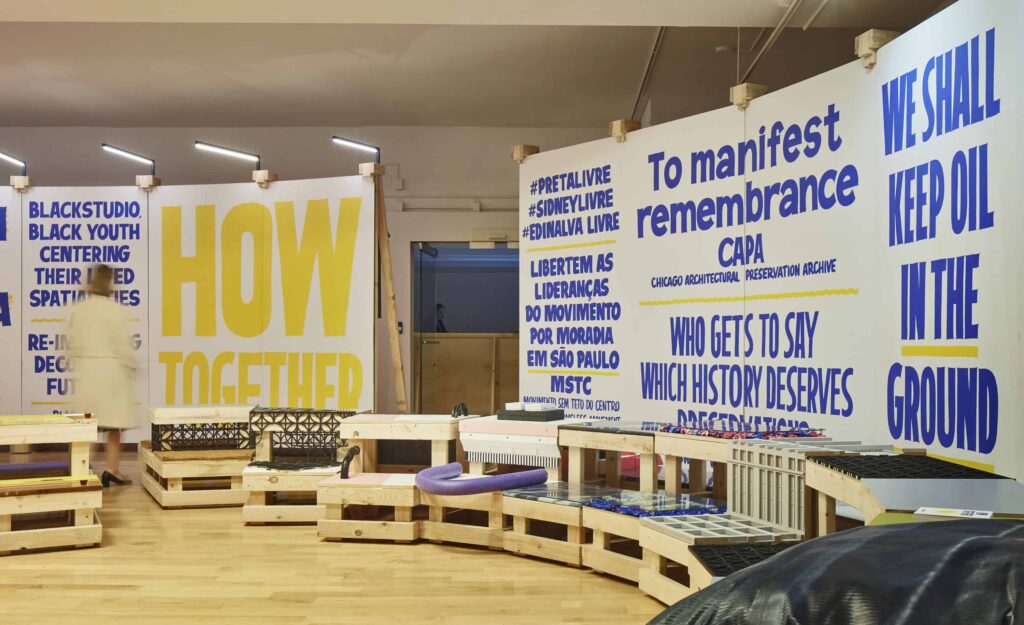
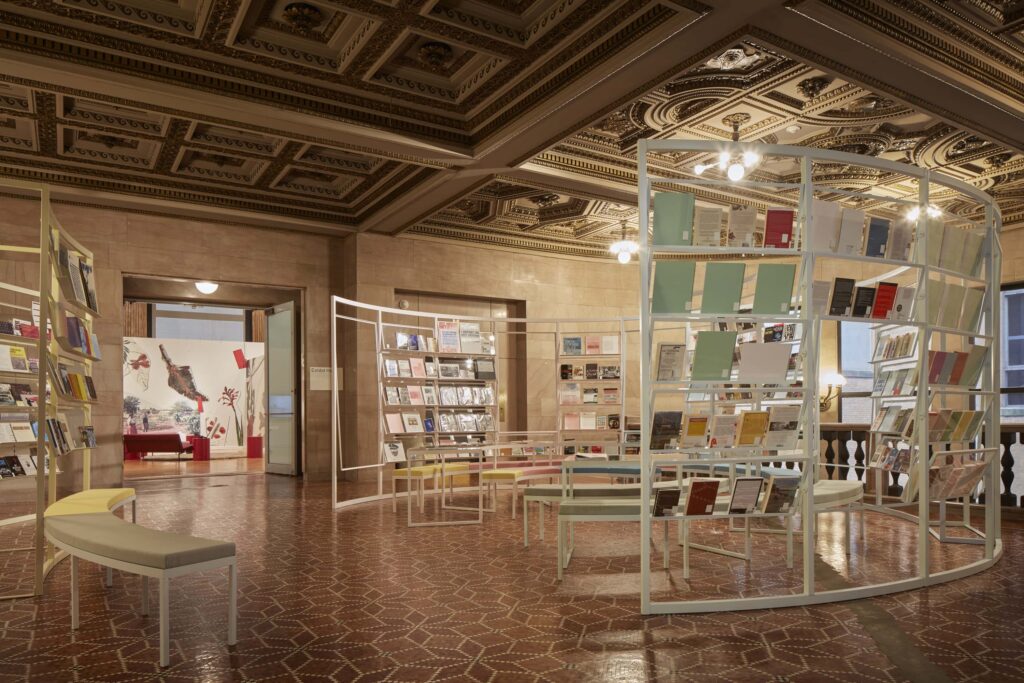
Yet within this flattened typography rose two of the biennial’s most definitive works, both dedicated to gun violence. A sound and text piece by Forensic Architecture and Invisible Institute offered alternate accounts of the events surrounding the 2018 police killing of 37-year-old Harith Augustus, a black barber and respected member of his Chicago South Shore community. Purposefully withholding images, the stark installation featured textual evidence from the collaborative’s own counter-investigation, as well as an audio recording with the solemn yet declarative words of poet Audrey Petty, “I will not watch another video of a black man murdered by police.”
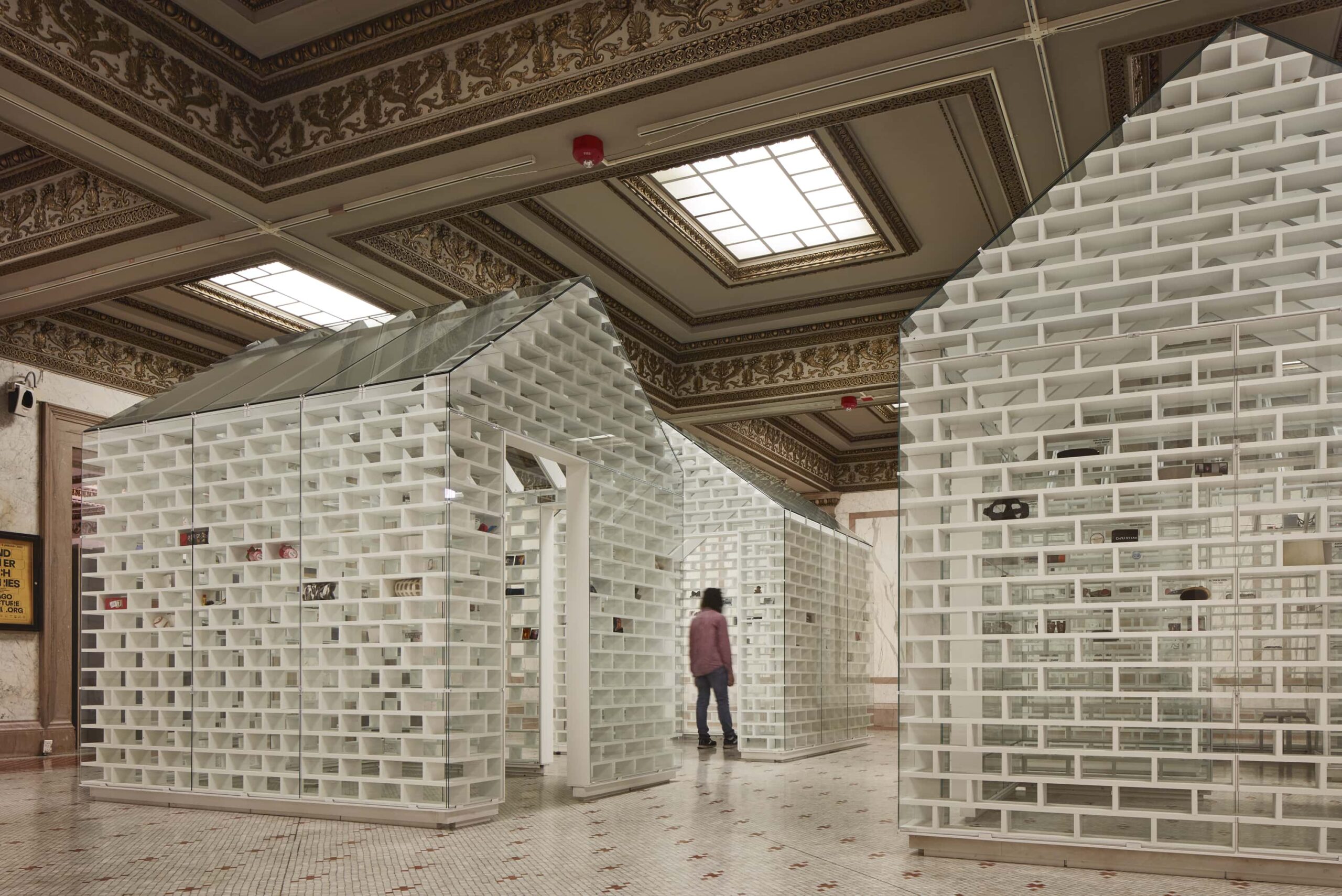
The Gun Violence Memorial Project by MASS Design Group, in partnership with artist Hank Willis Thomas, honors victims of gun violence in the United States, both the lives lost and the loved ones left behind. Inhabiting the ground-floor lobby of the Cultural Center are four houses each built from 700 glass bricks and representing according to MASS’s website the number of Americans killed by guns in a week. Various objects of remembrance (toys, photographs, articles of clothing) chosen by the victim’s friends and family are placed inside the bricks, along with the name, birth and death dates of the person being memorialized. Projected on a nearby wall are video excerpts from a forthcoming documentary portraying personal stories of loss and the importance of the selected objects on display. Here, individual and collective memory, material expression and narrative and archival storytelling combine in a moving tribute that offers the capacity for change and healing. The monument will remain on view until February, then travel to the National Building Museum in Washington, DC, as part of an exhibition surveying the work of MASS, whose other projects include the National Memorial for Peace and Justice in Montgomery, Alabama.
Such works successfully articulate the “other stories” of CAB’s central thesis, embodying architecture as advocacy. They also serve as a model for the kind of legacy projects that were part of the inaugural biennial’s original mandate though never realized and that future editions should aspire to conceive. To answer one of many questions posed by this year’s curatorial team, “How can architecture and planning be rearticulated for the common good?” (Note 2) One path: forgo the conventions of biennial exhibitions and make future editions of CAB The Commons – noun, adjective and verb.
Notes
- Spaces of Commoning: Artistic Research and the Utopia of the Everyday, eds. Anette Baldauf, et al. (Berlin: Sternberg Press, 2016), p. 21.
- Yesomi Umolu, Sepake Angiama, and Paulo Tavares, “The City Otherwise,” in the exhibition catalog for “. . .and other such stories” (Chicago Architecture Biennial in Association with Columbia Books on Architecture and the City, 2019), p. 14.